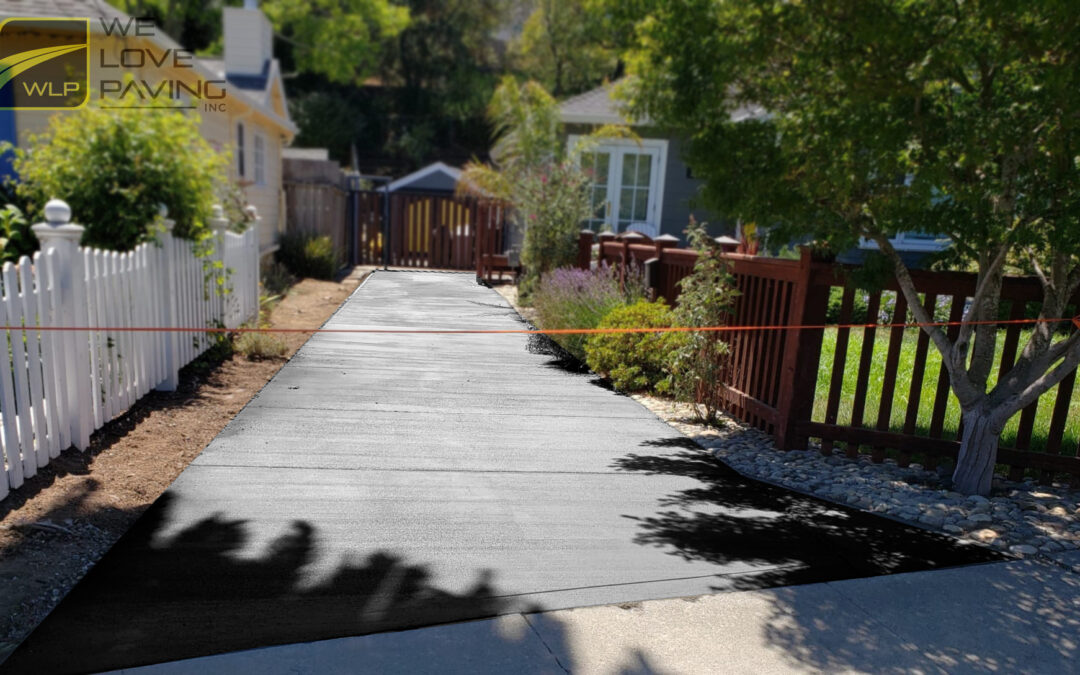When you notice cracks in your driveway, your first instinct might be to cover them up by paving over the existing surface. While this might seem like a quick and cost-effective solution, there are several factors to consider before making this decision. Paving over a cracked driveway is not always as simple as it seems, and without proper preparation, it could lead to more significant issues down the road. In this article, we will explore whether you can pave over a cracked driveway, what conditions need to be met, and the best practices for ensuring a durable and long-lasting surface.
1. Understanding the Causes of Cracks
Before deciding to pave over a cracked driveway, it’s essential to understand what caused the cracks in the first place. Cracks can result from various factors, including:
- Subgrade Issues: The subgrade, or the layer of soil beneath the driveway, plays a crucial role in its stability. If the subgrade was not properly prepared or has become unstable over time due to erosion, water infiltration, or soil movement, it can lead to cracks in the surface above.
- Water Damage: Water is one of the most common culprits behind driveway cracks. When water penetrates the surface and reaches the subgrade, it can cause the soil to expand and contract, leading to cracks. Additionally, freeze-thaw cycles in colder climates can exacerbate this problem.
- Heavy Loads: Driveways are designed to support specific weight limits. If heavy vehicles or equipment consistently use the driveway, it can lead to stress cracks over time. Overloading the driveway can also accelerate the wear and tear of the surface.
- Age and Wear: Like all materials, asphalt and concrete driveways deteriorate over time. Exposure to the elements, UV radiation, and regular use can cause the surface to weaken and develop cracks.
Understanding the root cause of the cracks is vital because if the underlying issue is not addressed, simply paving over the cracks will not prevent them from reappearing.
2. Assessing the Severity of Cracks
Not all cracks are created equal, and their severity will influence whether paving over them is a viable option. Cracks can generally be categorized into three types:
- Hairline Cracks: These are small, superficial cracks that often occur due to normal wear and tear or minor surface shrinkage. They are typically less than 1/8 inch wide and pose minimal structural risk. In many cases, hairline cracks can be successfully paved over with proper preparation.
- Surface Cracks: These are wider and deeper than hairline cracks and may indicate more significant underlying issues. Surface cracks can allow water to penetrate the subgrade, leading to further deterioration. Paving over surface cracks without addressing the cause may result in the cracks reappearing on the new surface.
- Structural Cracks: These are the most severe type of cracks, often resulting from subgrade issues or significant water damage. Structural cracks can indicate that the driveway’s foundation is compromised, and paving over them is generally not recommended without first repairing the underlying problem.
Before deciding to pave over a cracked driveway, it’s crucial to assess the severity of the cracks. A professional inspection may be necessary to determine whether the cracks are purely cosmetic or indicative of deeper structural issues.
3. Preparation Is Key
If you’ve determined that the cracks are minor and paving over the driveway is a viable option, proper preparation is essential for ensuring a long-lasting result. Simply applying a new layer of asphalt or concrete over the existing surface without addressing the cracks will likely lead to failure. Here are the key steps involved in preparing a cracked driveway for repaving:
- Cleaning the Surface: The first step is to thoroughly clean the existing driveway surface. Remove any debris, dirt, and vegetation that may have accumulated in the cracks. Power washing can be an effective way to ensure the surface is clean and ready for repair.
- Filling the Cracks: Before paving, it’s crucial to fill the cracks with an appropriate crack filler or sealant. For asphalt driveways, hot pour rubberized crack filler is often used, while concrete driveways may require a flexible polyurethane sealant. Filling the cracks helps prevent them from reflecting through the new surface.
- Applying a Bonding Agent: To ensure proper adhesion between the existing surface and the new layer, a bonding agent or tack coat is typically applied. This creates a strong bond and helps the new layer adhere to the old surface, reducing the risk of delamination.
- Overlaying the Driveway: Once the cracks are filled and the bonding agent is applied, the new layer of asphalt or concrete can be laid down. The thickness of the overlay will depend on the condition of the existing driveway and the type of material being used. Typically, asphalt overlays are between 1.5 to 2 inches thick, while concrete overlays may be thicker.
- Compaction: Proper compaction is essential to ensure the new layer is smooth and free of air pockets, which can lead to future cracking. A roller is typically used to compact the surface after the new material is applied.
4. Alternative Solutions
In some cases, paving over a cracked driveway may not be the best solution, especially if the cracks are severe or indicative of deeper structural problems. Here are a few alternative approaches to consider:
- Full Depth Reclamation: This method involves pulverizing the existing driveway and its subgrade, mixing it with new materials, and then compacting it to form a new base. This approach is particularly useful for driveways with significant subgrade issues.
- Remove and Replace: For driveways with extensive structural cracks or severe damage, the best option may be to remove the existing driveway entirely and replace it with a new one. While this is more costly and time-consuming, it ensures a fresh start with a stable foundation.
- Resurfacing with Reinforcement: In some cases, reinforcing the existing surface with geotextile fabric or a grid system before applying a new layer can help prevent future cracks from reappearing. This approach provides additional strength to the driveway and can extend its lifespan.
5. Long-Term Maintenance
Regardless of whether you decide to pave over your cracked driveway or choose an alternative solution, ongoing maintenance is essential to prolong its lifespan. Here are some tips for maintaining a newly paved driveway:
- Regular Sealing: For asphalt driveways, applying a seal coat every few years can protect the surface from water damage, UV rays, and wear and tear. Sealing helps prevent small cracks from forming and keeps the driveway looking new.
- Prompt Repairs: Address any new cracks or damage as soon as they appear. Small cracks can quickly become larger if left unattended, leading to more significant issues.
- Proper Drainage: Ensure that water drains away from your driveway to prevent pooling and water infiltration. Proper drainage is crucial for preventing cracks caused by water damage.
- Avoid Heavy Loads: While driveways are designed to support vehicles, avoid parking heavy trucks or equipment on them for extended periods. Distributing weight evenly can help prevent stress cracks.
- Seasonal Care: In colder climates, be mindful of snow removal practices. Using a plastic shovel instead of a metal one can prevent surface damage, and avoiding the use of harsh chemicals for de-icing can protect the driveway’s integrity.
Conclusion
Paving over a cracked driveway can be a cost-effective solution if done correctly, but it’s not always the best option for every situation. Understanding the causes and severity of the cracks, properly preparing the surface, and considering alternative solutions are all critical steps in ensuring a successful outcome. With the right approach and ongoing maintenance, you can extend the life of your driveway and avoid future problems.

